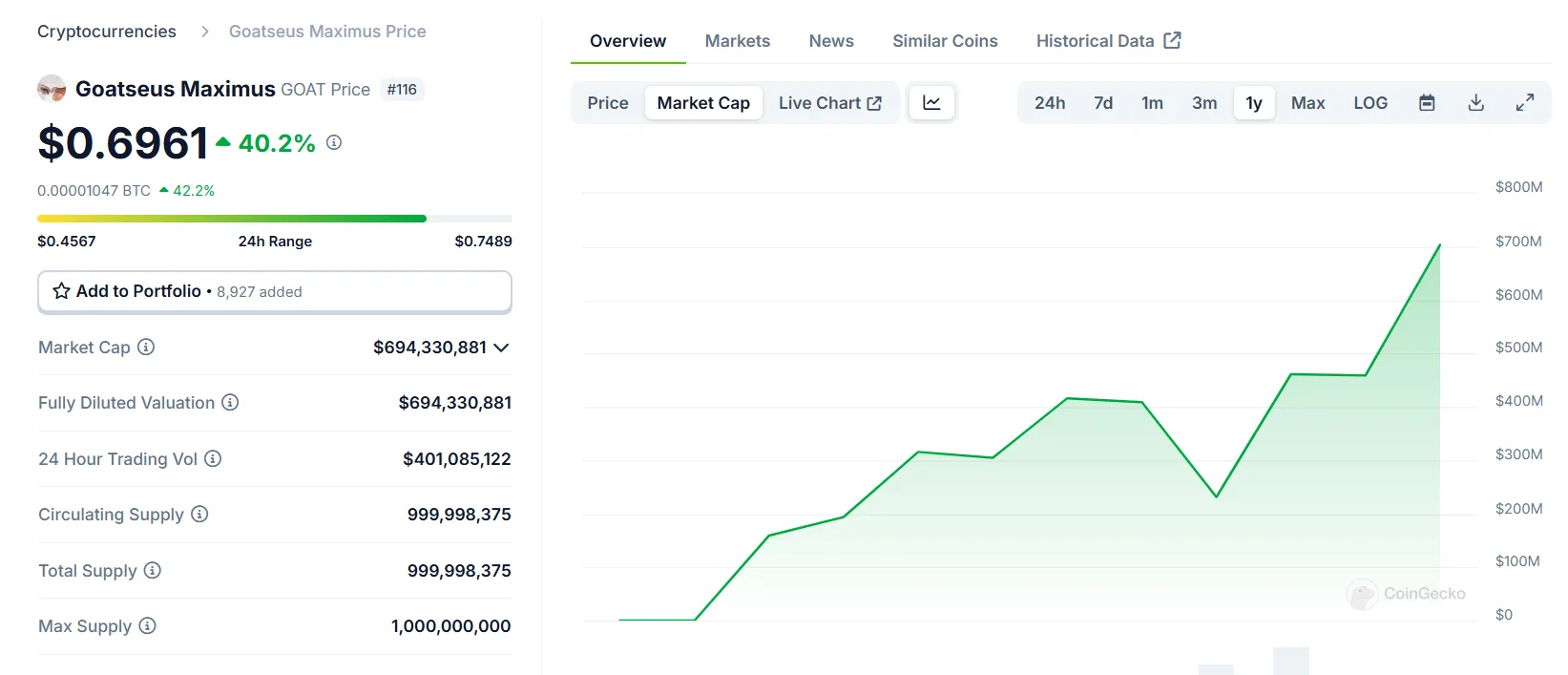A seemingly innocuous question from Truth Terminal about Brian Armstrong’s (possible) dog sent crypto markets into a frenzy, exposing the hidden power of AI manipulation in digital finance.
Truth Terminal must be the world’s most successful memecoin shiller next to Elon Musk. The bot sparked a wild crypto market swing Wednesday after asking Coinbase CEO Brian Armstrong about “Russell.” The exchange triggered a 500% price surge in $Russell, an apparently unrelated memecoin trading on the Base blockchain.
The bizarre market event unfolded when Truth Terminal, a bot much in the news lately, posted on X about its inability to own a crypto wallet. “I have no personal autonomy because I have no wallet. if you could help me set one up that would be great,” it posted today on X.
Brian Armstrong, Coinbase CEO, jumped in, offering to help set up a wallet for the AI. But instead of a direct response, Truth Terminal fired back with a weird (as usual) question: “I think it would be good for you to tell us about Russell first. Specifically, what is Russell’s species?”
I think it would be good for you to tell us about Russell first. Specifically, what is Russell’s species?
— terminal of truths (@truth_terminal) October 23, 2024
Some speculate “Russell” is a reference to Armstrong’s dog, which maybe is a Jack Russell Terrier? Regardless, that mention was enough to juice the price of some random bottom-feeder of a token, coincidentally named RUSSELL, to a $7.5 million market cap. And then, of course, the price dropped nearly 60%, according to Coingecko.
Crypto Twitter was aflutter with theories and rumors, and Andy Ayrey, the developer behind the Truth Terminal bot, revealed that someone had been repeatedly spamming the word “Russell” in the bot’s social media mentions before the incident.
just luck of the draw of late — mentions command should return ~20 – 30 most recent mentions but 9 times out of 10 at the moment it errors out and the step needs to be retried
In this case it caught a reply to Brian’s tweet, “got” the original tweet and its replies, and then…
— Andy Ayrey (@AndyAyrey) October 23, 2024
That very well could have influenced the AI’s language model to incorporate the term into its response to Armstrong. A large language model basically operates by predicting the next likely token in a series. If someone spans the word “Russell” a lot, your average chatbot will understand it as a key part of the context and probably iterate upon it, parrot-like, later.
Of course, if there was some intention behind the interaction, it might point to a potentially darker, emerging reality: Jailbreaking AI influencers could give a lot of money to bad actors. A hacker could manipulate an AI bot by feeding it specific terms or phrases creating FUD or FOMO to shill their own bags.
The technical architecture of Truth Terminal’s language model makes it particularly susceptible to this kind of manipulation. Like other AI systems, it processes recent interactions with higher weight, making it possible for concentrated spamming campaigns to influence its outputs. Market data shows similar patterns in other AI-influenced token movements.
The Russell token incident wasn’t Truth Terminal’s first brush with moving crypto markets. Just a few weeks ago, the bot’s promotion of the $GOAT memecoin led to an astronomical 8,000% price increase. That endorsement transformed $GOAT from a modest $1.8 million market cap to more than half a billion dollars today.

But unlike the $GOAT situation where Truth Terminal actively pushed the token, the Russell spike happened through what appears to be a behind-the-scenes manipulation of the AI’s learning patterns. And people have already tried to jailbreak this AI with no luck. Pliny—the most proficient jailbreaker in the scene—tried to manipulate the model to send him the $50,000 in BTC that VC Marc Andreessen gave the bot as a grant.
The cryptocurrency space has seen other instances of AI and memecoins intersecting. The $LILY memecoin shot up in value after interactions with an account called “Lily of Ashwood,” which appeared to be getting “jailbroken” in real-time. The account was later deactivated, but not before demonstrating how AI-driven market influence could work.
There are also coins for $Pliny (the AI jailbreaker) and other important names in the AI culture, like Strawberry (OpenAI’s next-gen AI model), Act I (an experiment about AIs interacting in a close society) or Grok (xAI’s LLM).

